Cannon-Fighter: A Proven Concept We Must Employ
Professor Paul Czysz's Cannon-Fighter
It would be precisely accurate to consider World War 2, Korea, the Bay of Pigs, Vietnam, Grenada and even as late as Panama as "garden hose" wars where we sprayed both kinetic energy (KE) bullets and high explosive (HE) shells wildly to suppress and pin-down enemies while others maneuvered to get a direct, unimpeded line-of-sight (LOS) to make them surrender or destroy them. Those that went in for the kill shot had a very dangerous job as unprotected infantry casualty rates show and even armored, tracked tanks had to withstand lots of fire to win the firefight to spare the lives of the former. Aircraft, on the other hand in order to fly are hard-pressed to carry aloft an armored skin to help them get a killing LOS; those planes that did it; the IL-2 Sturmovik with 1/2" steel all under its bottom, the 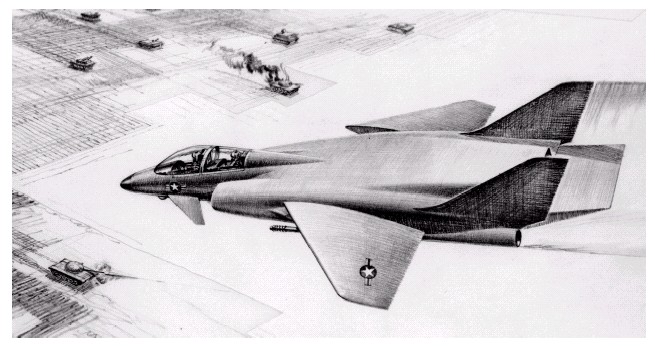
www.combatreform.org/killerbees2.htm
However, even if you do all of the above, the sad fact is that you may simply make a pass or even multiple passes on the enemy and fail to hit him to even be able to call him a "target"; he becomes a survivor who can kill you if not at that moment then on another day. Think of the German Soldier Tom Hanks' Captain Miller released in Saving Private Ryan who ended up later stabbing one of his men. The British in WW2 were in a fight for their nation's life as German submarine aka U-Boats were sinking cargo ships so fast that their people were being starved into submission--that if not checked would result in the same defeat the British Royal Navy blockade inflicted on Germany in WW1.
Patrol aircraft after many hours scouring the seas for signs of an U-Boat would after spotting one fire unguided rockets that would only miss; if they closed-in to machine gun bullet range they themselves were blasted by 20mm and 40mm automatic cannon exploding shell fire. What was needed was an air-launched larger cannon shell that would be accurately aimed and actually hit the target from a safe stand-off range from ground fire with a large enough of a bang to destroy it. The British chose the 57mm (6-pounder) cannon shell that was already a German light-to-medium tank killer on the ground.



They placed an automatic-loading 57mm cannon in the nose of a very fast, all-wood Mosquito fighter-bomber and the results were devastating as the video below shows:

 www.youtube.com/watch?v=M00f5RxhxLY
www.youtube.com/watch?v=M00f5RxhxLY
www.ww2aircraft.net/forum/weapons-systems-tech/awesome-mosquito-57mm-autocannon-9457.html
THE AIRCRAFT GUN

The RAF then became interested in fitting the Molins Gun in the de Havilland Mosquito, to form an airborne anti-tank weapon to replace the Hurricane IID which had been equipped with a pair of Vickers 40mm Class S guns.
The aircraft was duly developed as the Mosquito FB Mk XVIII, popularly known as the "Tsetse", but by this time the RAF had lost interest in the anti-tank gun role so the aircraft were brought into service by Coastal Command for anti-ship (and specifically anti-U-boat) purposes. The Tsetse, of which about 30 were built, served with No.248 Squadron during 1944 and is credited with sinking a U-boat.
Perhaps its most remarkable achievement occurred during an anti-shipping strike, when one Tsetse became involved in a melee with defending Luftwaffe aircraft. A Junkers 88 was careless enough to fly in front of a Tsetse, which promptly fired its big gun and demolished the Ju-88 with one shot!
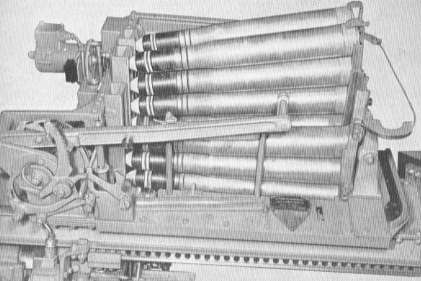
The Molins Gun, which was technically known to the RAF as the "QF 6 pdr Class M Mark I with Auto Loader Mk III" was based on the long-barreled (50 calibre) gun. The gun weighed 487 kg (635 kg with autoloader) and was fully automatic, with a rate of fire of about 55 rounds-per-minute. The ammunition supply in the autoloader consisted of 21 rounds, held in five racks of unequal length, plus two additional rounds in the feedway. The rounds in each rack were fed by a combination of gravity and a spring-loaded arm and each rack was moved into place in turn by an electric motor. The gun normally used the plain AP shot (that is the only one shown in photographs), so had a high muzzle velocity of 890 m/sec (2,920 fps). Against U-boat hulls, it was calculated that it would be able to penetrate the hull when striking at an angle of 45 degrees or more, at a range of about 1400m, even through 60cm of water. The gun/aircraft combination was extremely accurate, achieving a hit rate in training of 33% against tank-sized targets - compared with 5% for rocket projectiles. The Tsetse was eventually withdrawn from service when the RAF decided to use rocket projectiles for such roles because, despite their relative lack of accuracy, these were more suited to a variety of purposes and could easily be fitted, or removed, as required.
The Molins Gun in the Mosquito FB Mk XVIII was tested in the USA in 1945, in comparison with the nearest U.S. equivalent, the manually-loaded 75mm AN-Mk 5 in the PBJ-1H. This comparison was more valid than the difference in calibre might suggest, for the 75x350R ammunition used in the American gun (the same as was used by the M4 tank gun in the Sherman) was about the same overall size as the 57x441R, and the 6 pdr and 75mm tank guns were effectively interchangeable in the later British tanks.
The Molins Gun impressed the Americans with its performance and reliability and was considered superior to the 75mm as it could achieve a much higher rate-of-fire. It was noted that fairly violent evasive action and 2.5 positive Gs did not cause stoppages - which could not be said for manual loading!
The Americans recommended that the Molins autoloader could be considered as suitable not just for conventional guns--but also for 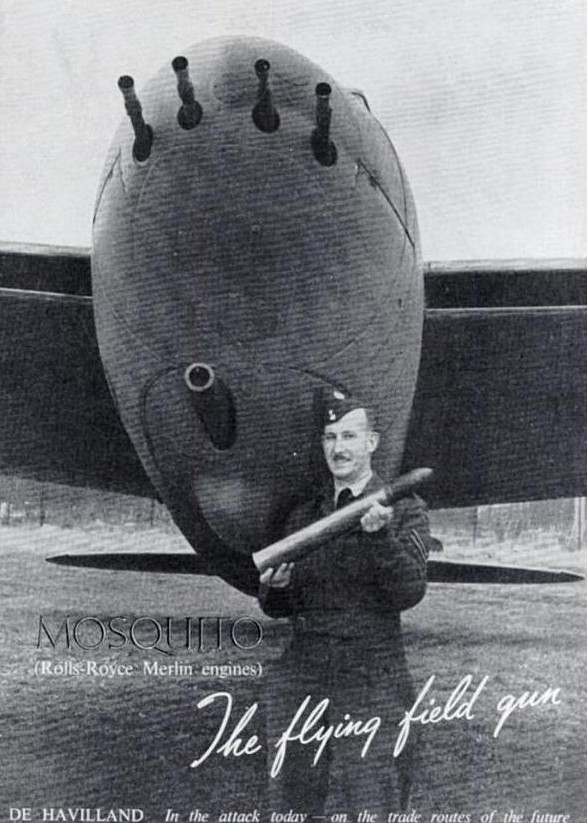
http://uboat.net/allies/aircraft/mosquito.htm
The Mosquito fights the U-boats

From November 1943 on wards the Mosquito was also used to attack U-boats shortly after, or just before they entered a port. Warning of these opportunities was provided by code-breakers. At that moment the U-boats traveled on the surface, and therefore were vulnerable to rockets or the 57mm shells of the FB.XVIII. For safety, the U-boats usually formed small convoys, with an escort of mine sweepers or so called Sperrbrecher ships, which had hulls reinforced with concrete as a protection against mines; both types bristled with anti-aircraft guns. For example, on 27 March 1944, 6 FB.VIs and 2 FB.XVIIIs attacked a convoy towards La Pallice, formed by U-960 with a escort of four M-class mine sweepers and two Sprerrbrecher vessels. 3 mine sweepers suffered light damage, U-960 was badly damaged, 2 Mosquitos returned home with serious damage, and one crash-landed.
Total production of the Mosquito was 7781, including 1034 built in Canada and 212 built in Australia.
U-boats sunk by this aircraft
1944
U-976, U-821 +, U-998
1945
U-804, U-843, U-1065, U-251 +, U-2359 +
8 U-boats lost to Mosquito aircraft.
+ means that the Mosquito shared the credit for the sinking.
There is always a very slight chance we might have missed one or two boats in this lookup. If you suspect so please let us know.
In the U.S., we placed a manually-loaded 75mm gun in the B-25G and H Mitchell bombers with mixed results. One squadron became very expert at busting Japanese ships with the 75mm cannon but others that were less pro-active were not as successful due to the low rate-of-fire.
\

Loading 105mm AC-130 shells by Hand: Just like on the B-25G/Hs!
The cannon shell shooting methodology has continued into Vietnam with the AC-119s taking over from AC-47 mini-gun ships followed by the AC-130 Spectres and Spookys of today which has a single, manually-loaded 105mm howitzer, 40mm Bofors autocannon and underwing hard-points for guided missiles/glide bombs.
Where are the Cannon-Fighters?
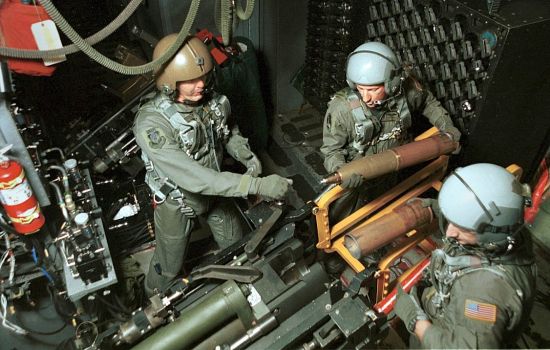

40mm Bofors and 105mm Cannon on AC-130 gunship
You may conclude "all is well" that we have large caliber cannon fire from the sky, but that fire support can only be offered at night due to the slow, large-sized target the AC-130 transport plane itself is, and its not going to be helpful even then during nation-state wars (NSWs). We need a fast cannon FIGHTER that can blast targets like the 57mm Mosquito for CAS/MAS but far more accurate. You might reply and offer up the 30mm Gatling cannon A-10 Warthog as our current solution, but its neither fast nor has the punch needed even with its coke-bottle sized shells fired in bursts that spread out into a pattern. These errant shells could kill innocent civilians while missing the exact target we want to hit. If that target is an enemy tank, to strafe a stitch of 30mm shells onto its thin top, the A-10 is well within range of every enemy weapon--and even though heavily armored might still get shot down. The next predictable response you might say is, to lob guided bombs from a stand-off (SO) at the target, which is no longer CLOSE air support--but DISTANT air support (DAS) which launched from outside enemy anti-aircraft ranges makes the methodology SODAS. Aircraft doing SODAS for ground maneuver forces cannot acquire their targets and needs either Airborne Forward Air Controllers (AFACs) or ground FACs (GFACs) to at least ascertain a GPS digital coordinate and/or mark the target with a pulsing laser in the proper code for the guided bomb to fly to the target. You may say, complicated, but all is well, let's go back to sleep. Combats in Iraq/Afghanistan show that SODAS not only fails by us lacking AFACs in observation/attack (O/A) planes, GFACs are often pinned-down by the maneuver units they are attached to, give the wrong aim points and bombs have been killing innocent civilians to such a degree that the entire counter-insurgency (COIN) mission in Afghanistan has been placed in jeopardy. Even drug-compromised President Karzai and U.S. commander General McCrystal have demanded tight controls be placed on our current air strike mentality lest we continue to bomb the civilians into the Taliban rebel's camp. There have been so many innocent civilians killed by unmanned drone missile strikes that it may already be too late to win back the support of the Afghan populace.
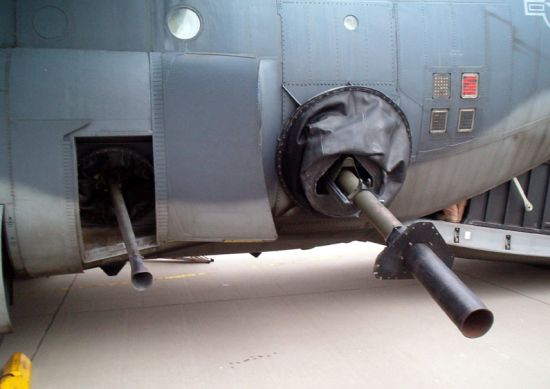
Aftermath of a Taliban Ambush in Afghanistan
Firepower in a sub-national conflict (SNC) must be morally sound or else we damage our cause more than we help it. In contrast, during a nation-state war, we must maximize our military force to overwhelm our organized opponent and the aircraft we have for NSW may by DESIGN not be selective enough to contribute to SNC. Cases in point are the stealthy-shaped F-22 and F-35 fighter-bombers that fly too fast to ascertain ground targets that the USAF smugly proclaims they will contribute by SODAS--when this methodology has already failed and been "turned off" in Afghanistan. The USAF obsessed with the sexy, multi-role fighter-bomber panacea now realizes it needs a manned observation/attack aircraft that can have an enlisted AFAC aboard--but is taking its sweet time to obtain them. However, even with AFACs, SODAS is going to fail us even if their guided bombs strike because THEY COST TOO MUCH. By placing a guidance head into a bomb you are still making them into a costly, un-powered missile and we are about to lose the war effort in Afghanistan because we are out of money. President Obama's sending in of another 30, 000 troops is going to cost us $1B for every 1, 000 troops for an additional $30B per year--on top of the $60B/60, 000 troops we already have there. I don't know if our troops are eating gold-plated MREs because these things still suck and make you constipated, but our current "American Way of War" (racketeering that deliberately milks problems rather than solves them) is unaffordable and gives us little positive, tangible results to show for it. U.S. troops that infuriate the locals to rebel against us should be replaced by a sensor-security fence system to secure the AFPAK border from outside Islamic trouble-makers and stop the drugs from going out.
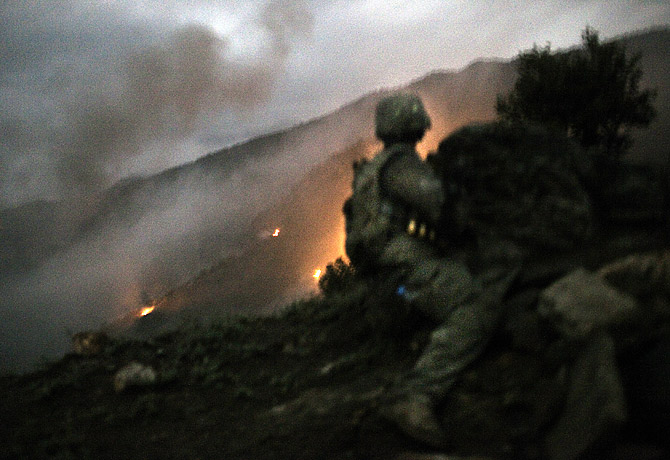
Other than low-key advisors to help the Afghan National Army (ANA) man the sensor-security fence system, American troops in a Quick Reaction Force (QRF) mode with air-transportable light tanks should be mobile off-shore based (MOB) in the Indian ocean to respond to any sub-national conflict group threatening us. The one-time cost for erecting the sensor-security fence system and buying the MOB would be the same for one year's worth of American foot-sloggers--but better yet would be useful for many years to come at much reduced operating costs.
www.combatreform.org/itstimetojointheMOB.htm
Cannon-Fighter Killer Bees Needed & Long Overdue
In NSW, the situation is even more dire. The enemy can now spot our bloated aircraft carriers and humongous land air bases from space and air; spies on the ground can send GPS coordinates and pictures by cell phones to target our aircraft with their own precision-guided munitions (PGMs) which can be mobile surface-to-surface ballistic missiles (SSMs) which are very hard to stop short of anti-missile, missile systems that are not anywhere near 100% reliable. The USAF needs a whole new way of operating using a new type of aircraft that are ground-mobile from ISO shipping container "BATTLEBOXes" for a Fighter-In-A-Box (FINAB) capability that is dispersed, camouflaged and underground to avoid air base destruction.
www.combatreform.org/fighterinabox.htm
We need FINAB fighters that can gain air supremacy by massed numbers AKA "Swarm Fighters"
www.combatreforn.org/killerbees4.htm
and "Killer Bees" that can dominate from air-to-ground.
www.combatreform.org/killerbees.htm
We know that in CAS/MAS we can ill-afford $1M guided missiles to destroy a handful of AK47 (AKM) gunmen hiding in a building, and in NSW we cannot kill all the targets we need to this way--because we will simply run-out of PGMs. On the other end of the spectrum, we cannot resort to garden-hosing the enemy with KE and small HE cannon fire because this places our attack planes in fatal jeopardy.
Air Attack Munitions Spectrum
Unguided (lots)<------------------------------------------>Guided (few)
What we need is in the middle--what we and the British learned at the end of WW2 through OJT--we need an ACCURATE large caliber cannon shell firing fighter plane--a "male tank" of the air. The A-10's small 30mm shells represent a "female tank" capability not a point target demolishing capability.
Experiments after WW2 to Get Accurate HE Shells Fired from Aircraft
Legendary aerospace engineer and weapons futurist Professor Paul Czysz has already done the conceptual and hardware experimental work to create either a 75mm or 105mm Cannon-Fighter that can be FINAB ground-mobile, hit targets with one-shot destructive accuracy--without us going broke with $1M missiles and guided bombs. ALL the previous cannon fighters had a hard time hitting the broad side-of-a-barn (but some could hit the side of a ship). IF these had a proper
aiming system they could have been lethal.
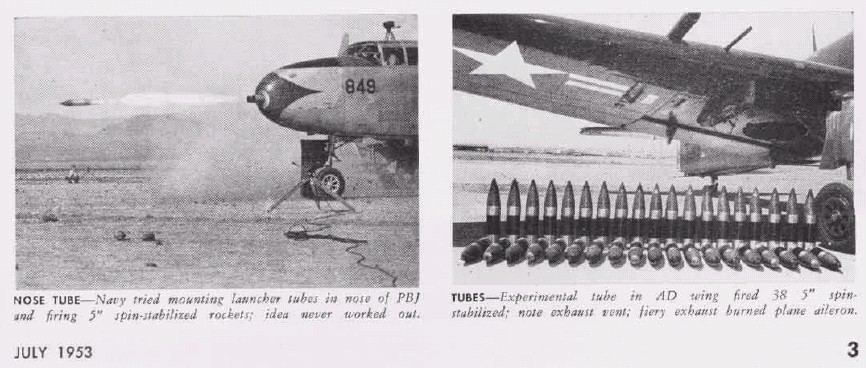

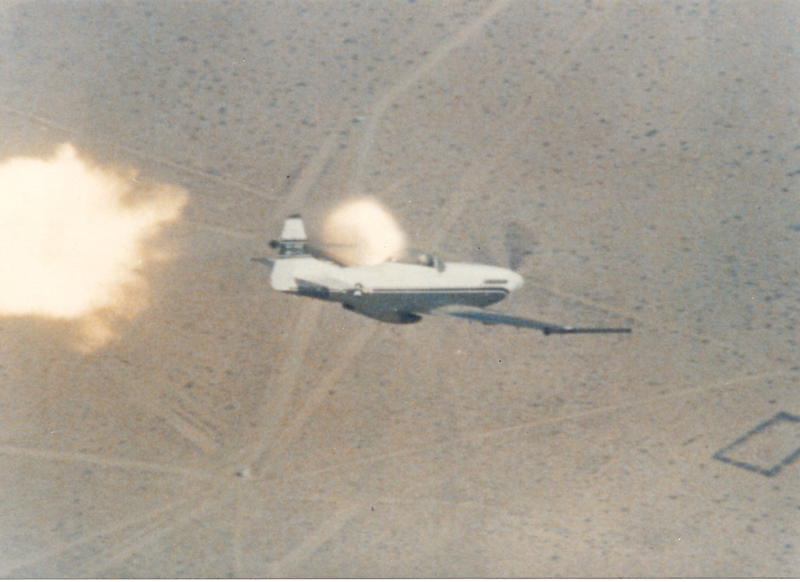
This P-51 pilot (a marine) practiced for weeks against two trucks on the range at White Sands and had all of his altitudes, speeds, and aim points marked in the sand. When the Congressional delegation arrived to see if there was something to this (they were looking at a new P-51 airframe with a 3,500 hp turboprop carrying wing cannons) he hit both trucks with one-shot from each cannon. Subsequent evaluations showed it really was not a practical system and the guns were single-shot.
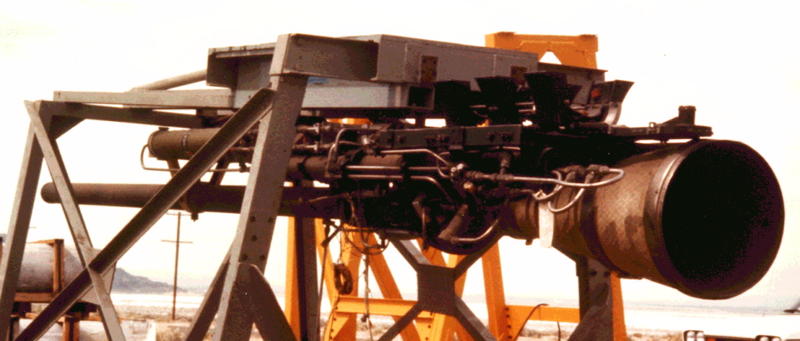
Harvey Aluminum came up with a self-loading cannon with a better recoil-compensating nozzle, but it never took hold. They always lacked a good aiming/target tracking system. This is what the Czysz Team created.
A "smart" cannon shell is 5x less heavy than having missiles or rockets "fly" themselves by action-reaction rocket thrust alone. By "spitting" out cannon shells using high pressure gases in a gun tube, we save tremendous weight which translates into MORE shots per aircraft and less cost because all of that rocket fuel propellent is avoided. Its taking a known fact that Army artillerymen have known for years, that a SHELL fired ballistically through a barrel is far more economical than shooting a guided missile which has to establish its forward motion and flight path by generating thrust in the open air. We can get more thrust with less propellent by shooting shells through a tube.

With Cannon-Fighters, we could have thousands upon thousands of these low-cost cannon shells carried aloft by Killer Bee swarms to blast open paths for our ground maneuver forces to pour through and reach the enemy's centers-of-gravity to collapse them and end the conflict quickly and with the least amount of life and property damage.

Professor Czysz shows that had Cannon-Fighters been available in large numbers to bust German pill boxes and explode their tanks our 4, 000 men lost on D-Day could have been drastically reduced. The use of heavy bombers dropping HE bombs from high altitudes were dismal failures at busting German fortifications from the vertical plane and they had to be knocked-out by horizontal LOS using USN destroyer guns at extreme risk to these ships and Saving Private Ryan-style infantry assault using 2.36" bazooka rocket launchers and hand-emplaced HE demolition charges. The British on their beaches fought much smarter with General Percy Hobart's fabulous "funny" tanks that LOS blasted and obstacle overcame with HE cannon and myriad devices. Details:
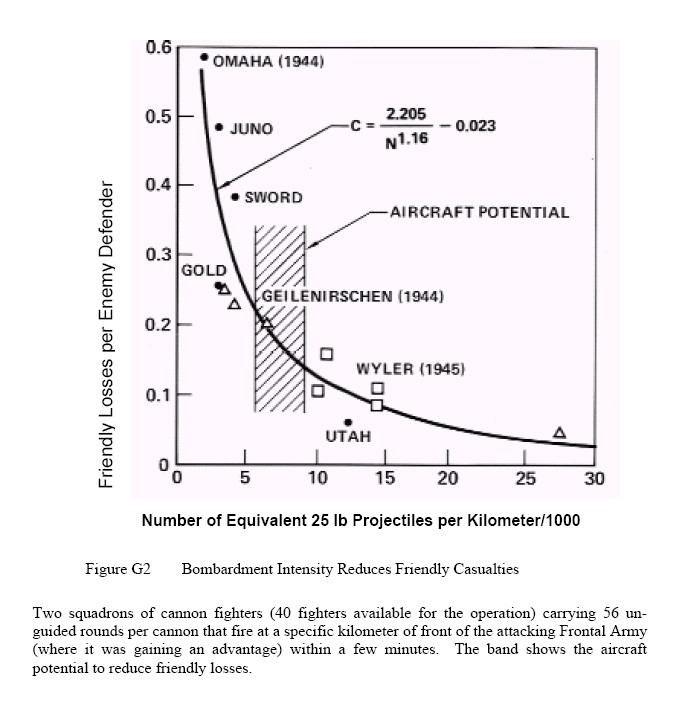
www.combatreform.org/sappertanks.htm
Czysz's cannon-fighters would be the aerial equivalent to Hobart's Churchill medium tank with 165mm demolition gun.
How do We Get Near 100% Accuracy?
You may have watched the Mosquito 57mm cannon video and wondered how we'd get better accuracy today? You need to have the complete story. Its not just the cannon--but targeting and fire control together. Then you know the full story of the McDonnell-Douglas (McAir) Cannon-Fighter. The original Cannon-Fighter for McAir/USAF was a 105mm liquid-injected gun with a guided round. The Army gave up on liquid guns so in the report below for the Army was changed to a 75mm solid propellant gun called RAVEN.
Meet the Cannon-Fighter
Most readers are probably aware that the M1 Abrams heavy tank gets its one-shot, one-kill accuracy by its FIRE CONTROL system factoring in all the possible variables so the "guidance" of the 120mm round takes place one-time during the aiming so a successful LOS aiming of the projectile takes place. Its called "gunnery" but here the human decides the aimpoint--but the ballistic fire control works behind-the-scenes to make sure the shell gets there.
In the air, moving at hundreds of miles-per-hour, a pilot hands-full flying the plane can easily focus on looking for ground targets and fly right into the ground aka "target fixation". A second person in back acting as a gunner/observer is a must for the Cannon-Fighter. Even then, he needs help keeping track of multiple targets in 3 dimensions, so Czysz's team integrated a millimeter wave radar IFFC system so immediately when a target is spotted its exact geolocation is noted in the attack computer and not lost even when maneuvering to attack. During WW2, the Hawker Typhoon/Tempest fighter-bombers could only kill 1 vehicle every 20 missions!


Even if enemy MiGs were to appear; Cannon-Fighters can shoot-them down with flechette cannon shells.
So Where Do We Go From Here?
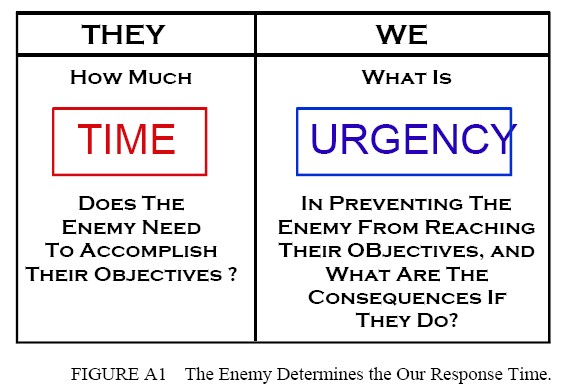
Operational urgency details: Appendix A
America is going broke from inefficient, military racketeering means. We must realize we can lose wars by running out of money--just as easily as by losing battles. Economies-of-Force (sensor-security fences, MOBs etc.) must be employed to disengage from occupying Iraq/Afghanistan inefficiently and counter-productively by flooding areas with U.S. troops with no terrain control measures to leverage the situation. After this, the entire U.S. Military (USMIL) must be reformed into a PROFESSIONAL force run on facts and conscience and the yes-man, lemming bureaucracy of selfish egomaniacs eliminated forever. The F-35B STOVL model must be the type used by the USAF to get out of the habit of operating from vulnerable, obvious air bases. Complimenting F-35Bs must be thousands of affordable Swarm Fighters for air supremacy and fixed target strikes and Killer Bees for CAS/MAS enabled by AFACs in O/A STOL "grasshoppers". The F-35 cannot do everything, if we try we are going to lose a war. We should build prototypes of the Cannon-Fighter and find out what they can do, then decide where to go from there.
The future has to be lived to find out its outcome.